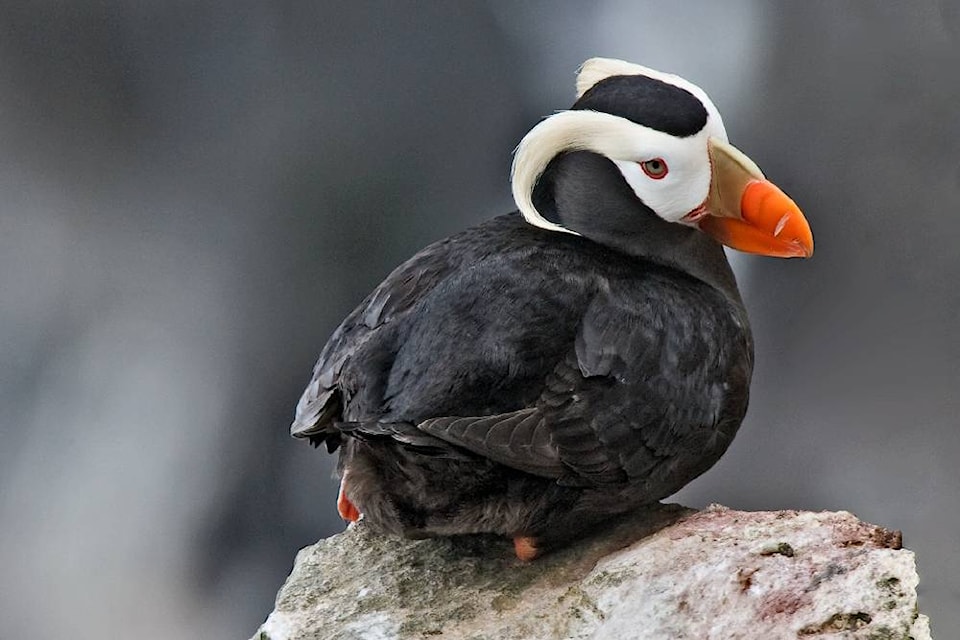A Sandhill Crane wanders the dunes with a flock of Canada Geese.
Why? Tina, who told me about it, has seen the flock together a few times and finds it very interesting. We know that birds like to stick together for protection if they can, a single bird is more vulnerable to predation than a flock of birds, but the crane is a big bird and not easy prey. Perhaps it has a mate on the nest somewhere and is staying around to keep an eye on things. Maybe it’s taking advantage of the feeding pattern of the geese and picks up behind them. It could be that the crane was born here and somehow bonded with the geese which were in the vicinity at the time. We know that birds can bond with humans if we are the first thing they see when they hatch. Who really knows?
There are small crane flocks feeding around the island; in Tlell, Port Clements and Delkatla Wildlife Sanctuary. They are probably not nesting birds, unlike the pairs that stay together near their nest. No serious studies have been done on the summering cranes here to determine where they come from and where they go even though we have the highest abundance of nesting Sandhills in British Columbia.
READ MORE: On the Wing: Feed, fish, birds and whales
Sad news from the ocean. There has been a mass die-off of Tufted Puffins along the shores of St. Paul Island, a tiny Alaskan outpost in the southern Bering Sea. Julia Parrish, a Prof at the University of Washington, and a group of colleagues, used weather data to estimate that between 3,150 and 8,500 birds likely died, possibly from starvation.
Their paper, published in the journal PLOS ONE, argues that the die-off is at least partially attributable to the changing climate. “This mortality event represents one of multiple seabird mortality events that have occurred in the Northeast Pacific from 2014 to 2018, cumulatively suggestive of broad-scale ecosystem change,” they write. “Such episodes are indicators of a changing world, and particularly of climate change.” The authors suggest that the climate-fuelled shifts likely affected the food supply, as well as the fact that the puffins were in moult and unable to fly which helped doom those that washed ashore on St. Paul Island.
It’s only the beginning. Similar circumstances appear to have fuelled an unprecedented die off of Common Murres between 2015 and into early 2016 off the Alaska and Pacific Coast. In 2017 another seabird die-off happened in the Bering and Chukchi seas of Alaska and Russia, affecting Fulmars, Short-tailed Shearwaters and other species.
READ MORE: On the Wing: Of treaties, feathers and shorebirds
We too are affected. Remember when hundreds of dead Cassin’s Auklets were found along the Tlell beaches just a few years ago and all those dead krill found here in Masset? Tufted Puffins nest on remote Haida Gwaii islands and the other seabirds mentioned all cruise Hecate Strait and Dixon Entrance. We can all do small things to keep the planet from burning. Don’t idle our vehicles, and if someone does, ask them not to. Don’t mow great swathes of grass, let it grow a little to help keep the planet cool and let the flowers grow. We can use flowers right now.
Haida Gwaii Observer
Newsroom
Send email
Like the Haida Gwaii Observer on Facebook
Follow us on Twitter
